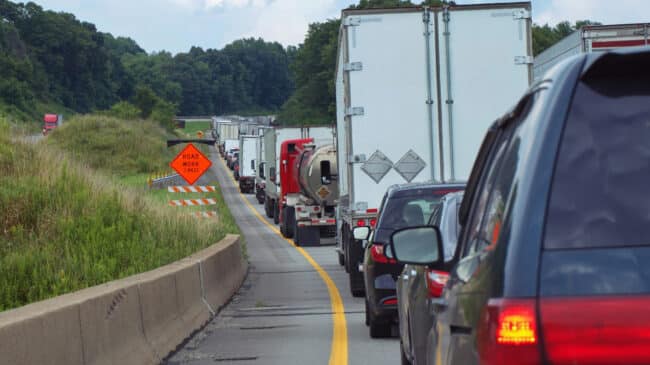On May 2, the U.S. Department of Transportation (DOT) published a final rule authorizing oral fluid specimen testing for drugs as an alternative to urine tests. The rule, which took effect on June 1, represents a major improvement on the status quo.
Transportation employee drug testing came in response to deadly accidents in the late 1980s and early 1990s that involved on-duty intoxication, but testing urine has been a poor proxy, especially for marijuana. With marijuana being increasingly legalized at the state level, the workforce impacts of outdated drug-testing practices are a growing concern. I discussed the proposed rule last year and noted that while it was not a perfect solution to the problem of false positive errors, it was an improvement over urine testing.
Since Congress enacted the Omnibus Transportation Employee Testing Act (OTETA) of 1991, safety-sensitive workers across transportation modes (aviation, motor carrier, rail, and transit) have been subject to drug and alcohol screening prior to employment and randomly throughout the year, as well as following an accident and before being cleared to return to duty after a failed test.
For the five covered controlled substances subject to OTETA testing, urinalysis has long been the approved test method. The most commonly detected covered substance—marijuana—has been increasingly legalized for adult recreational use by states in recent years. The problem is that urinalysis can detect the presence of marijuana metabolites for weeks following use and result in a positive test even when the subject is no longer under the influence of marijuana. While oral fluid testing is still a flawed proxy for detecting marijuana intoxication, metabolites are generally only detectable in saliva for one to three days following use.
Under the new OTETA testing rule, employers are not required to adopt oral fluid testing in lieu of urinalysis, although the Department of Transportation expects many will eventually do so. The timeline for this transition—and the realization of reductions in intoxication false positives—is uncertain largely because oral fluid testing may currently be slightly more expensive than traditional urinalysis.
In its proposed rule, DOT offered a cost-benefit analysis suggesting substantial cost savings may be seen by employers who switch from urinalysis to oral fluid testing. This methodology was strongly criticized by the transportation industry, and DOT discarded it in the final rule, acknowledging there may not be immediate cost savings for employers who make the switch. However, the Department of Transportation said many in the industry agreed that economies of scale in oral fluid testing would be realized as adoption increases. Time will tell.
But even if there aren’t immediate test administration cost savings, employers still have a strong incentive to adopt oral fluid testing. Regulated transportation entities that are required to test their employees for marijuana use are likely to see a reduction in positive tests if they adopt saliva testing, which will help reduce workforce disruptions in a tight labor market.
In addition, saliva testing is harder to cheat. This is because employees are generally afforded privacy in their production of urine specimens. Employees who expect to test positive because of recent drug use have been known to bring “clean” urine from someone else and then offer it as their own. There are no comparable privacy considerations for saliva swabbing, which is directly administered by the person collecting the test specimen. For this reason, insurers may encourage employers to adopt oral fluid testing.
In the longer term, as more states legalize adult recreational marijuana use, federal policymakers will need to contend with the viability of maintaining marijuana as a federal Schedule I controlled substance. But until more substantive drug policy reforms materialize, the Department of Transportation’s OTETA drug testing modernization will lessen the negative impact of this policy mismatch between the federal and state governments.

